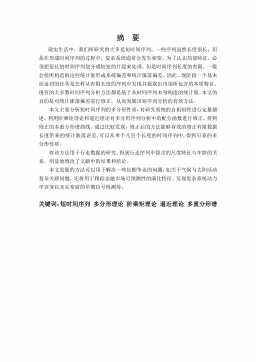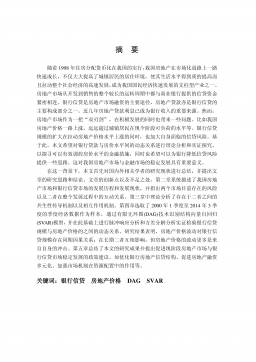基于机器视觉的瓷砖在线分拣系统
VIP免费
摘 要
我国是全球最大的瓷砖生产国,也是增长速度最快的国家,中国瓷砖的消费
量也居全球领先地位。随着生活水平的不断提高,不同花纹的瓷砖需求量也与日
俱增。然中国的一些中小型瓷砖生产企业由于生产条件和经济成本的制约,很多
情况下都是不同花纹的瓷砖共用一条生产线。在瓷砖生产线末端都是靠人工进行
瓷砖的分类搬运,这样不仅人的工作强度大且易受外界因素干扰,从而效率低下。
随着科技的进步,基于机器视觉技术的瓷砖分色自动分拣系统逐渐引入生产实践,
替代人工分拣,不但大大节约了人力,更重要的是提高了生产效率。
基于机器视觉技术的瓷砖自动分拣系统包括工业相机、照明、机械手和图像
处理系统。图像处理系统工作包括图像处理、图像分析和图像分类。瓷砖图像预
处理是对瓷砖原始图像进行滤波和分割:滤波是滤除图像杂散噪声,提高图像质
量,图像分割是对滤波后的瓷砖图像进行信号提取,对此瓷砖图像而言是提取其
纹路区域;图像分类是对前面图像分割区域的纹路特征进行识别,给出瓷砖类别
的判断,生产线上机械手根据图像判断的结果将瓷砖抓取到同类产品中摆放。
本文对瓷砖在线分拣系统图像处理技术进行了研究和实验。研究了瓷砖图像
预处理滤波算法和分类算法。图像预处理通过对不同瓷砖图像直方图分析,给出
了自适应中值滤波算法;比较了常用边缘检测方法,选用形态学运算对滤波后的
瓷砖图像进行边缘提取。图像处理通过分析图像直方图,将整个瓷砖均等分割,
采用局部二进制模式进行纹理特征的提取,再拼接成完整的纹理特征,通过主成
分分析的方法将维数降低至 50。采用支持向量机分类方法对瓷砖图像进行了分
类,支持向量机的关键是选择合适的核函数,它直接决定着分类结果的好坏。通
过反复试验,选择了瓷砖识别率最高的径向基核函数参数。由于是小样本、非线
性,较好地实现了瓷砖图像分类。整个图像处理在基于 HALCON 系统的工控机
平台上进行了实际工作和测试,测试结果表明该算法具有很高的识别率,生产实
践证明基于该分类算法的瓷砖在线分拣系统具有很高的准确性和可靠性。
关键词:机器视觉 滤波 边缘检测 纹理 主成分分析 支持向量机
ABSTRACT
China is the largest producer of ceramic tile in the world. It’s also the fastest
growing country. China's consumption of ceramic tile is in the position of leading in
the world. With the improvement of people’s living standard, the ceramic tile of
different decorative pattern demand is growing. However, some of China's small and
medium-sized ceramic tile production enterprises of different decorative pattern shared
a production line, because of the constraints of the cost of the production conditions
and economic. In the end of the ceramic tile production line, ceramic tiles have to be
carried out with different types by hand, it’s not only a waste of physical strength but
also easy influenced by external conditions, so it’s inefficient. With the progress of
science and technology, the ceramic tile’s color automatic sorting system based on
machine vision technology is gradually introduced into production practice, and the
manual sorting will be replaced, It’s really a save physical strength, and it’s more
important that the production’s efficiency is apparently improve.
The ceramic tile automatic sorting system based on machine vision technology
including industrial camera, lighting, manipulator and image processing system.Image
processing system including image processing, image analysis and image classification.
Ceramic tile image preprocessing is the ceramic tile original image filtering and
segmentation: filtration is the process of filtrate the noise of image, improve the quality
of image. Image segmentation is to extract the image’s signal after the process of
filtration. It’s to extract the texture area for ceramic tile’s images; Image classification
is to recognize the front area of image segmentation’s grain characteristics, and catch
the tile’s category, the production line of ceramic tile fetching manipulator according to
the result of images to put the same products.
In this paper, the online sorting system of ceramic tile’s image processing
technology was studied and the experiment. Tile’s image preprocessing filter algorithm
is studied and the classification algorithm is given. Image preprocessing compared the
commonly used edge measurement method based on the analysis of different ceramic
tile image histogram.Select the morphology operation on the filtered image tile edge
extraction. The entire ceramic tile be equal divided based on the analysis of the image
histogram by the technology of image processing.It’s use the local binary pattern to
extract the texture feature separately, and then joining together into a complete texture
characteristics, and then the dimension is reduced to 50 through repeated experiments
on the method of principal component analysis.It’s the key to choose appropriate
kernel function to classify the ceramic tile image based on the way, which is supported
by vector machine (SVM). It is directly decides the classification result is good or not.
Through trial and error, choose the ceramic tile’s highest recognition rate radial basis
kernel function parameters. It’s better to realize the ceramic tile image classification
because of its nature of small sample and nonlinear. The system of image processing
based on HALCON industrial platform, has carried on the actual work and test, the
test’s results show that the algorithm has a high recognition rate and the production
practice prove that the ceramic tile online sorting system based on the classification
algorithm has high accuracy and reliability.
Key Words: Machine vision, filter, bord detection, texture, Principal
Component Analysis, Support vector machine
目录
摘要
ABSTRACT
第一章 绪论 .....................................................................................................................1
1.1 本课题研究背景 .................................................................................................1
1.2 机器视觉发展和应用现状 .................................................................................2
1.3 机器视觉分类识别系统存在的主要问题 .........................................................3
1.4 本课题研究的主要内容、意义及论文安排 .....................................................4
1.4.1 本课题研究的主要内容 ...........................................................................4
1.4.2 本课题的研究意义 ...................................................................................4
1.4.3 论文章节安排 ...........................................................................................5
第二章 瓷砖分类机器视觉系统 .....................................................................................6
2.1 瓷砖生产工艺 .....................................................................................................6
2.2 机器视觉系统工作原理及组成 .........................................................................7
2.3 基于机器视觉的瓷砖在线分拣系统 .................................................................8
2.3.1 图像采集系统 ...........................................................................................9
2.3.2 瓷砖图像处理分类 .................................................................................11
2.4 本章小结 ...........................................................................................................12
第三章 瓷砖图像处理和分析 .......................................................................................13
3.1 瓷砖图像增强 ...................................................................................................13
3.1.1 灰度变换 .................................................................................................14
3.1.2 自适应中值滤波 .....................................................................................19
3.1.3 改进的自适应中值滤波 .........................................................................20
3.2 边缘检测方法进行瓷砖图像分割 ...................................................................24
3.2.1 常用的边缘检测算子 .............................................................................24
3.2.2 形态学边缘检测算子 .............................................................................28
3.3 本章小结 ...........................................................................................................32
第四章 瓷砖图像识别与分类 .......................................................................................33
4.1 瓷砖图像纹理特征的提取 ...............................................................................33
4.1.1 分块局部二进制模式(MB-LBP)提取纹理特征 ..............................33
4.1.2 主成分分析(PCA)方法进行纹理特征的降维 .................................37
4.2 瓷砖图像分类 ...................................................................................................38
4.2.1 常用分类器 .............................................................................................38
4.2.2 支持向量机(SVM)实现瓷砖自动分类 ................................................. 39
4.3 本章小结 ...........................................................................................................45
第五章 瓷砖在线分拣系统测试与运行 .......................................................................46
5.1 分拣系统组成和工作原理 ...............................................................................46
5.1.1 光源 .........................................................................................................47
5.1.2 工业相机 .................................................................................................47
5.1.3 主机 .........................................................................................................48
5.1.4 机器人 .....................................................................................................48
5.2 系统软件 ...........................................................................................................50
5.2.1 HALCON 软件开发环境 ........................................................................50
5.2.2 软件结构 .................................................................................................51
5.3 瓷砖自动分类结果 ...........................................................................................54
5.4 本章小结 ...........................................................................................................55
第六章 总结与展望 .......................................................................................................56
参考文献 .........................................................................................................................58
在读期间公开发表的论文和承担科研项目及取得成果 .............................................62
致谢 .................................................................................................................................63
第一章 绪论
1
第一章 绪论
1.1 本课题研究背景
改革开放以后,中国的经济迅猛发展,伴随而来的就是建筑业的蒸蒸日上,
相应的建筑材料也变得供不应求,其中的瓷砖也有了很大发展。目前中国是世
界范围内的瓷砖生产大国,生产的建筑瓷砖总数超过了世界总产量的二分之
一,形成了佛山、高安、夹江、景德镇等多个产业集中区。而且中国的瓷砖种
类多数目大质量好,价格合适,使得中国的瓷砖市场范围越来越广。
90 年代,厨房卫生间的瓷砖还很单调,形状和颜色都很单一。然而随着
科技的发展,瓷砖的生产工艺也有了很大改进,很多企业开始生产颜色和图案
更加丰富的瓷砖。随后的几年里,瓷砖产品的花色种类越来越多,瓷砖的设计
发展到了较高的地步。
近几年,随着房地产的迅猛发展,瓷砖销售变得异常火爆,瓷砖已经成为
我们日常生活中不可缺少的东西,促进了经济的发展。随着大家对生活质量要
求的提高,瓷砖的质量、颜色以及花纹形状都有了较大的发展。但是与其他国
家相比仍有很大发展空间,对瓷砖行业而言,我国的瓷砖主要用于国内销售,
而出口量大约占总产量的 10%左右,且主要在东南亚地区。和别的行业相比,
中国的瓷砖品牌太多,没有一家瓷砖占市场主导地位。而且随着瓷砖的需求量
不断增加,瓷砖生产厂家面对着很多的挑战和机遇。不仅要保证瓷砖的生产质
量,而且要按时完成客户的要求,及时把瓷砖交付出去。
现在随着人们的要求越来越高,瓷砖生产厂也不得不引进国外先进的生产
技术和装备。我们之前生产的瓷砖比较低档,已经跟不上形势了。这主要是因
为我国的墙地砖生产企业的自动化程度不高,生产效率低,尤其是在产品的质
量检测和自动化分类上,目前还停留在人工操作水平上面。现在的瓷砖生产都
是根据客户的不同需求,而且每个品种的需求量还不一样,所以需要多个品种
一起生产。一条生产线一次可以同时生产十几个不同品种的瓷砖,然后再把这
些瓷砖分开[1]。
通过对广东佛山和江西高安等几家瓷砖生产厂家生产线的参观后了解到:
瓷砖的质量检测和分类都完全靠人工。几个人站在瓷砖生产线的最后,有几种
不同。类型的瓷砖仅安排几个人去分类搬运,一个人只负责一种瓷砖的分类。
人只凭肉眼去观察,而有时候不同类型的瓷砖看上去很相近,人全凭感觉和经
验去分类搬运,很难及时准确的对瓷砖进行分类,并且长时间工作人眼会产生
疲劳,这大大降低了生产效率以及提高了出错率。再加上经窑煅烧后瓷砖温度
上海理工大学硕士学位论文
2
很高以及灰尘、废水不能很好及时地处理,严重伤害了人的身体。
而且大家都知道,根据不同人的不同要求,现在的瓷砖无论是大小还是形
状和颜色都有很多种类,一家瓷砖生产厂也需同时生产几种不同的瓷砖。由于
瓷砖生产设备的引进,瓷砖的生产效率越来越高,只单纯依靠人工分类搬运已
经不能跟上瓷砖生产的节奏了,再加上劳动强度大,污染严重,基于机器视觉
的自动分类是唯一可行的办法。
本文的课题来源就是江西省宜春市高安瓷砖生产厂。
1.2 机器视觉发展和应用现状
随着科技的发展,机器视觉的出现给生产线上的瓷砖自动分类问题提供了有
力的技术支持。所谓的机器视觉就是使用机器代替人眼进行测量和判断。机器视
觉技术是近几年才发展起来的,它主要是依靠计算机和图像采集技术。所谓的机
器视觉系统就是通过与之相对应的一系列产品把拍到的图片,传给图像处理系统
[1]。最后根据像素分布以及亮度、颜色等各种信息,转换成数字信号;然后该系
统通过各种处理提取特征,进行分类识别。
机器视觉领域发展迅速,现在已变成计算机科学的重要领域。它最初从 50
年代的统计模式识别发展而来,那时主要被用在低维图像上。60 年代,一位伟大
的人物将它应用到立体的三维结构中。而在随后的十年里,逐渐出现了基于机器
视觉的应用系统,越来越多的人开始研究该领域,随之而来的就是新方法、新理
论的不断出现。
90 年代的中国,只有少数大学和研究所在研究机器视觉技术。最初研究机器
视觉的人,随着研究的深入他们开始从学校和研究所走向社会创建自己的机器视
觉公司,并研发出了中国第一代基于机器视觉相关的软件和硬件产品。当然,这
些产品并没有被普遍大众所使用,只是卖给一些大学的实验室让其做一些很简单
的图像处理工作。
过了 7年以后,人们才开始慢慢注意到将机器视觉应用到瓷砖行业。于此同
时,很多学校的老师开始在这方面投入精力进行研究,并将自己的研究成果写成
论文进行发表。从此,大众才普遍开始将机器视觉应用到瓷砖行业,也越来越被
瓷砖生产企业所认可。
98 年以后,越来越多的电子工厂落地,而恰恰在此时中国开始把机器视觉检
测以及分类相关的整套设备引入中国[2]。另一方面,中国在基于机器视觉的边缘
检测、滤波和分类等各方面都做了大量研究,中国的龙头设备制造商开始研究国
外的这些设备,准备开发研制自己本土的机器视觉设备。从此机器视觉市场迈上
摘要:
展开>>
收起<<
摘要我国是全球最大的瓷砖生产国,也是增长速度最快的国家,中国瓷砖的消费量也居全球领先地位。随着生活水平的不断提高,不同花纹的瓷砖需求量也与日俱增。然中国的一些中小型瓷砖生产企业由于生产条件和经济成本的制约,很多情况下都是不同花纹的瓷砖共用一条生产线。在瓷砖生产线末端都是靠人工进行瓷砖的分类搬运,这样不仅人的工作强度大且易受外界因素干扰,从而效率低下。随着科技的进步,基于机器视觉技术的瓷砖分色自动分拣系统逐渐引入生产实践,替代人工分拣,不但大大节约了人力,更重要的是提高了生产效率。基于机器视觉技术的瓷砖自动分拣系统包括工业相机、照明、机械手和图像处理系统。图像处理系统工作包括图像处理、图像分析和...
相关推荐
-
跨境电商商业计划书模版VIP免费
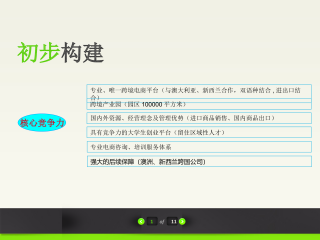
 2025-01-09 27
2025-01-09 27 -
跨境电商方案范文VIP免费
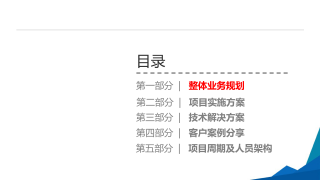
 2025-01-09 14
2025-01-09 14 -
创业计划书VIP免费
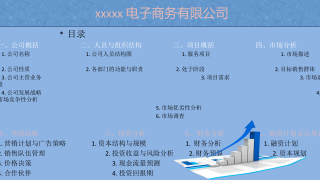
 2025-01-09 18
2025-01-09 18 -
xx生鲜APP计划书VIP免费

 2025-01-09 12
2025-01-09 12 -
跨境电商创业园商业计划书(盈利模式)VIP免费
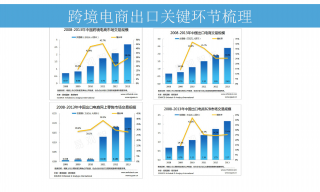
 2025-01-09 8
2025-01-09 8 -
跨境电商计划书VIP免费
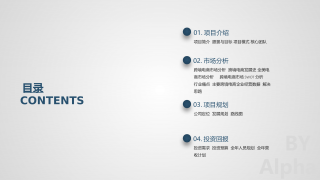
 2025-01-09 13
2025-01-09 13 -
绿色食品电商平台项目计划书VIP免费

 2025-01-09 22
2025-01-09 22 -
农产品电子商务商业计划书VIP免费

 2025-01-09 9
2025-01-09 9 -
农村电商平台商业计划书VIP免费
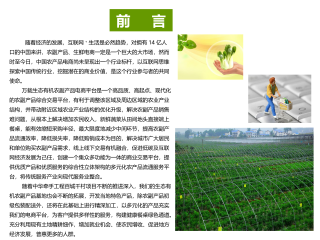
 2025-01-09 13
2025-01-09 13 -
生鲜商城平台商业计划书VIP免费
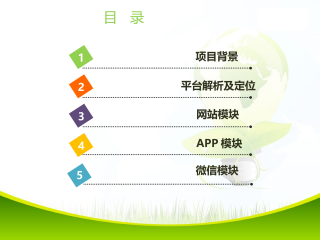
 2025-01-09 21
2025-01-09 21
作者:侯斌
分类:高等教育资料
价格:15积分
属性:67 页
大小:2.88MB
格式:PDF
时间:2024-11-19


